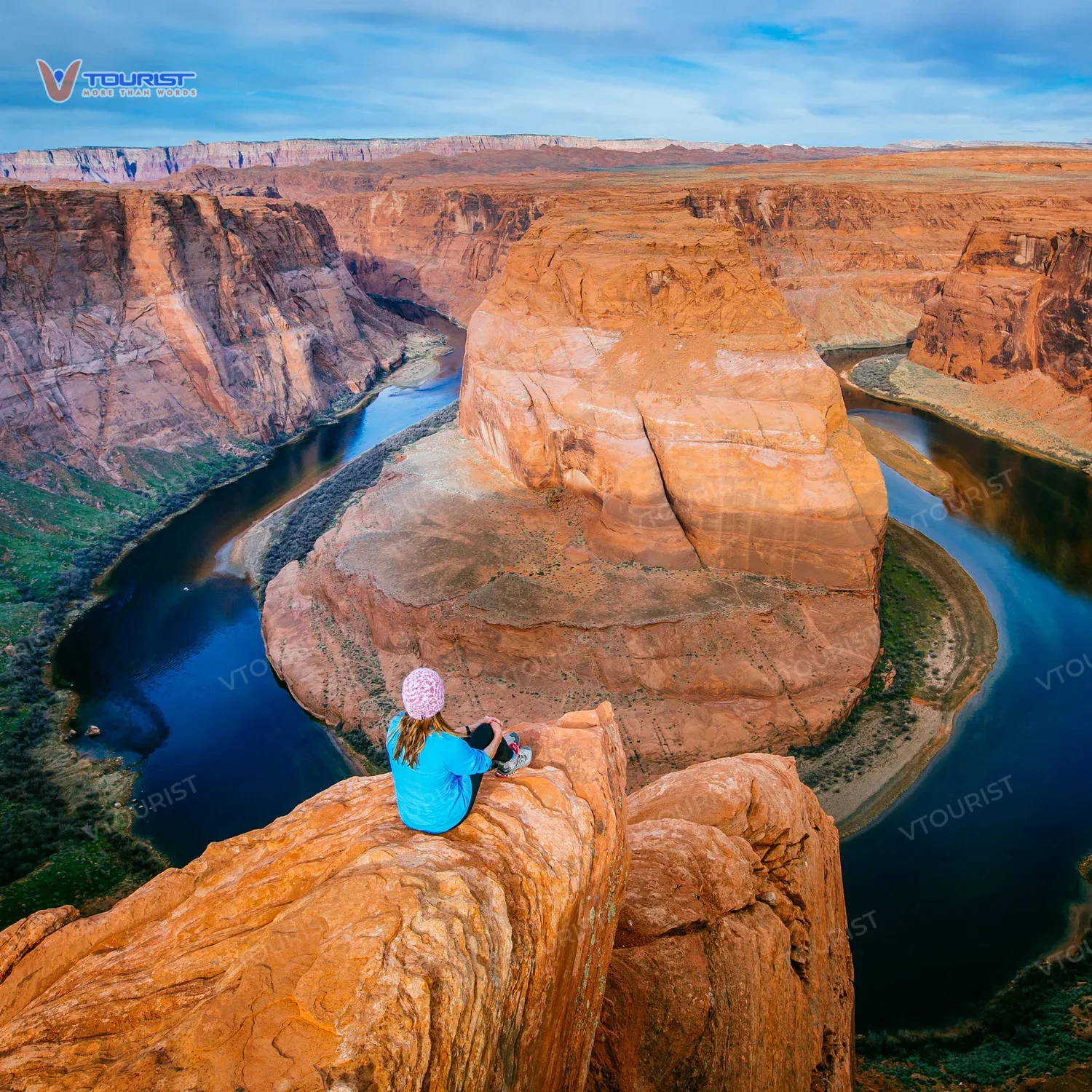Nevada, a state renowned for its expansive deserts and the vibrant city of Las Vegas, harbors a lesser-known, hidden beauty: lakes with unique and extraordinary colors. Far from the typical image of clear blue lakes, Nevada’s lakes boast vibrant hues of turquoise, pastel pink, reddish-orange, and even green, creating an incredibly striking natural panorama. Join “Du lịch khắp thế gian” (Travel the Globe) as we explore these colorful “gems,” admire their unique beauty, and uncover the scientific mysteries behind their captivating shades.
Pyramid Lake: A Turquoise Gem in the Desert
Pyramid Lake, a saltwater lake situated in northwestern Nevada, is approximately an hour’s drive from Reno. The lake’s distinctive turquoise color is its defining feature, a hue resulting from a combination of dissolved minerals in the water and the reflection of sunlight.

Beyond its impressive color, Pyramid Lake is also famous for its peculiar tufa towers, limestone formations rising from the water’s surface. These formations were created thousands of years ago when the lake’s water level was significantly higher than it is today. Pyramid Lake is an ideal destination for those who enjoy photography, hiking, and water sports.
Walker Lake: The Melancholy Green
Walker Lake, a saltwater lake in west-central Nevada, presents a contrasting beauty to Pyramid Lake, displaying a somber charm with its deep green color. This hue is due to the excessive growth of algae and cyanobacteria in the water, a consequence of severely reduced water inflow caused by upstream water diversion.
Walker Lake faces the threat of complete disappearance, serving as a stark reminder of human impact on the natural environment. Nevertheless, Walker Lake’s unique beauty and poignant story continue to attract visitors who come to appreciate its scenery and learn about the ongoing conservation efforts.
Ruby Lake: Captivating Pink Hues
Ruby Lake, a freshwater lake located in northeastern Nevada, is celebrated for its enchanting pink hue, particularly striking at sunset. This coloration is attributed to the presence of a specific type of bacteria called Halobacteria, which thrives in saline environments and produces pink pigments when exposed to sunlight.

Ruby Lake is a significant wildlife refuge, providing habitat for numerous migratory bird species and other rare animals. Visitors can enjoy activities such as hiking, birdwatching, and kayaking to explore the natural beauty of Ruby Lake.
Fly Geyser: A Fusion of Water and Minerals
Fly Geyser is not strictly a natural lake but rather a man-made geothermal geyser system situated in northern Nevada. However, Fly Geyser’s unique beauty and vibrant colors make it an unmissable attraction in Nevada.
Geysers erupt from the ground, carrying dissolved minerals such as calcium carbonate and silica. Upon contact with the air, these minerals precipitate and form colorful cone-shaped structures, displaying shades of red, orange, yellow, green, and brown. Fly Geyser exemplifies nature’s artistry and the interplay between water, minerals, and microorganisms.
Decoding the Color Mystery of Nevada’s Lakes
The unusual colors of Nevada’s lakes are not merely an aesthetic phenomenon but rather the result of complex chemical, biological, and geological processes. Key factors influencing lake color include:
- Dissolved Minerals: Minerals like iron, copper, manganese, and calcium carbonate can impart various colors to water.
- Algae and Cyanobacteria: Overgrowth of algae and cyanobacteria can color water green, blue-green, or red.
- Sunlight: Sunlight interacts with water molecules and dissolved substances, creating diverse color effects.
- Lake Depth: Lake depth affects the amount of sunlight penetrating the water, influencing the perceived color.
- Suspended Particles: Suspended particles like silt, sand, and organic matter can tint water brown or gray.
Studying the colors of lakes can yield crucial insights into water quality, ecosystem health, and ongoing geological processes in the region.
Traveling to Nevada’s Colorful Lakes
To ensure a fulfilling trip exploring Nevada’s colorful lakes, consider these tips:
- Best Time to Visit: Spring and autumn offer the most pleasant and mild weather for visiting Nevada’s lakes.
- Transportation: Renting a car is recommended for convenient travel between different sites.
- Essentials: Pack sunscreen, a hat, sunglasses, and drinking water to protect yourself from the intense desert sun.
- Research: Learn about the lakes you plan to visit, including location, directions, activities, and conservation regulations.
- Respect the Environment: Adhere to environmental protection guidelines, avoid littering, and minimize your impact on the lake ecosystems.
Conclusion
Nevada’s colorful lakes are a testament to the diversity and hidden beauty of nature. They are not only captivating tourist destinations but also natural “laboratories” where scientists can study chemical, biological, and geological processes. Visit Nevada and explore these colorful “gems” to witness their unique beauty and unravel the scientific mysteries they hold.